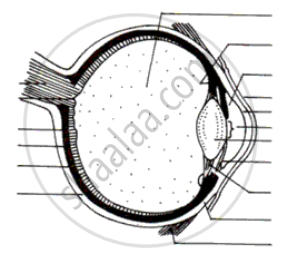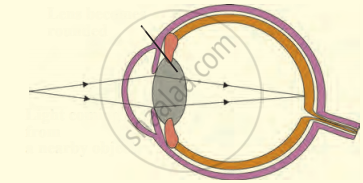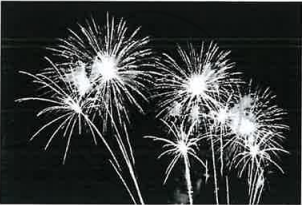Advertisements
Advertisements
प्रश्न
The human eye can focus objects at different distances by adjusting the focal length of the eye lens. This is due to ______.
पर्याय
presbyopia
accommodation
near-sightedness
far-sightedness
उत्तर
The human eye can focus objects at different distances by adjusting the focal length of the eye lens. This is due to accommodation.
Explanation:
Accommodation enables the human eye to focus objects situated at different distances by adjusting the focal length of the eye lens.
APPEARS IN
संबंधित प्रश्न
Write the function of the following part of the human eye: crystalline lens
Name the part of the retina which is insensitive to light.
Out of rods and cones m the retina of your eye:
which detect colour?
Fill in the following blank with suitable word:
The iris controls the amount of................entering the eye.
Fill in the following blank with suitable word:
To bring light from a distant object to a focus on the retina of the eye, the convex eye-lens needs to be made..........
List, in order, the parts of the eye through which light passes to reach the retina.
Explain why, we cannot see our seats first when we enter a darkened cinema hall from bright light but gradually they become visible.
Name the following:
The photoreceptors found in the retina of the eye.
Given below is a set of five parts. Rewrite them in correct sequence.
Conjunctiva, retina, cornea, optic nerve, lens.
Label the following diagram :

Answer the following question.
Trace the sequence of events Whichoccur when a bright light is focused on your eyes.
The following figure show the change in the shape of the lens while seeing distant and nearby objects. Complete the figures by correctly labelling the diagram.

Draw the struture of human eye and label its parts.
With reference to human eye, answer the following question.
What is blind spot?
Match the following:
| Column - I | Column - II |
| 1. Retina | a. Path way of light |
| 2. Pupil | b. Far point comes closer |
| 3. Ciliary muscles | c. near point moves away |
| 4. Myopia | d. Screen of the eye |
| 5. Hypermetropia | e. Power of accommodation |
Chris was watching the display of fireworks in the sky.

- Trace the path of the light rays using the following terms:
Fovea, Lens, Conjunctiva, Pupil, Cornea. - Name the nerve that carries the impulse for vision to the brain.
Name the following:
Place of no vision in the retina of the eye.
Where is the following located?
Yellow spot
Name the following:
Two pigments of the sensory cells.
Differentiate between members of the following pair with reference to what is asked in the bracket.
Aqueous humour and vitreous humour (location).
